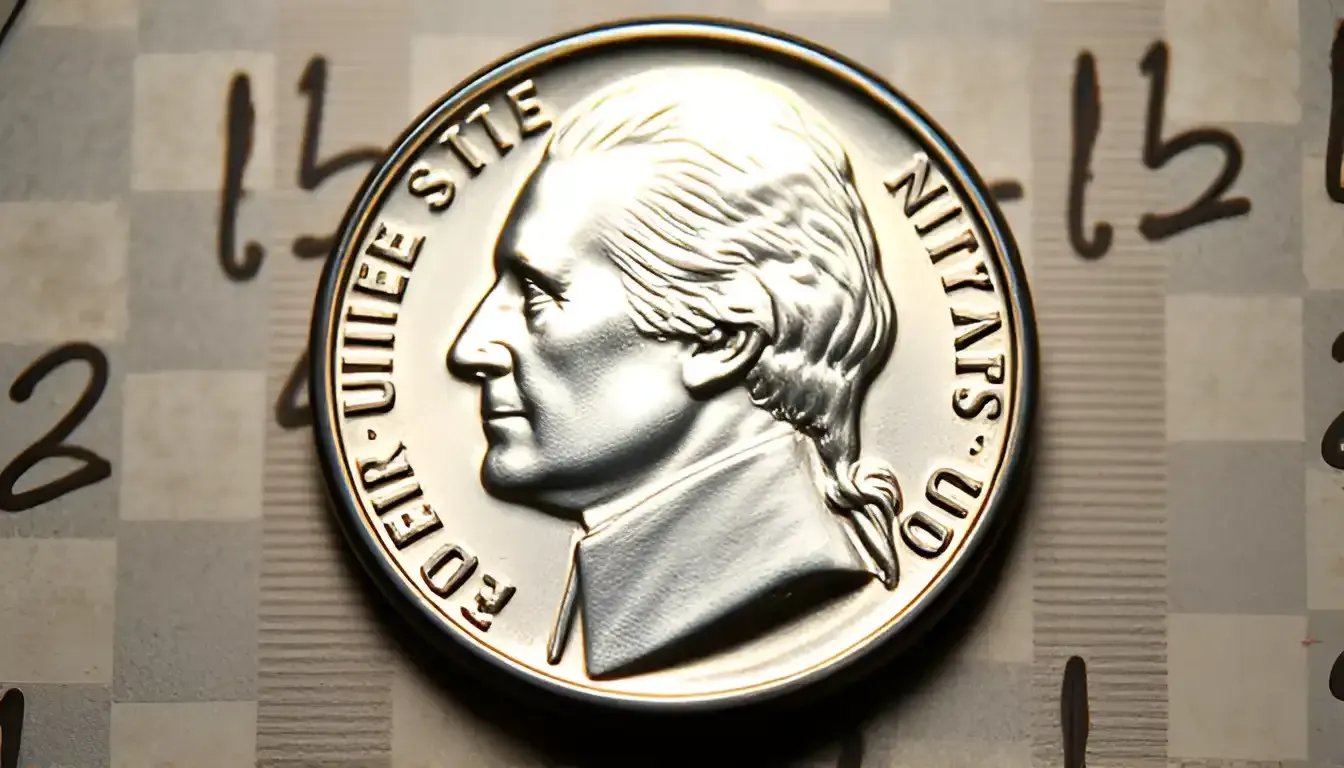The Lincoln Wheat Penny, introduced in 1909 to honor President Abraham Lincoln’s 100th birth anniversary, is among the most iconic coins in U.S. numismatic history. Designed by Victor David Brenner, the coin features Lincoln’s portrait on the obverse and two wheat stalks on the reverse, symbolizing America’s agricultural roots. Over nearly five decades of production, billions were minted, but a select few have become some of the most valuable collectibles worldwide. As of 2025, the rare coin collecting market has grown to a net worth of approximately $15 billion, attracting enthusiasts ranging from teenagers to seasoned collectors well into their 70s. Among these prized treasures is a Lincoln Wheat Penny estimated to be worth a staggering $5.5 million.
Why Is This Particular Lincoln Wheat Penny Valued at $5.5 Million?
When a coin reaches an astronomical value like $5.5 million, collectors and investors alike wonder what sets it apart. The most likely explanation lies in a combination of factors: extreme rarity, a minting anomaly, and pristine preservation. It is suspected that this particular Lincoln Wheat Penny could be a unique minting error, potentially struck on a non-standard metal planchet or created with a double-die impression. Additionally, experts speculate that this coin has remained in “mint state” or uncirculated condition, a factor that exponentially boosts its worth. Its unprecedented grade and historical backstory contribute to its record-breaking valuation.
What Is the Historical Significance of the Lincoln Wheat Penny?
The Lincoln Wheat Penny holds a special place in American history as the first U.S. coin to feature a president’s portrait. Released during a period of great transformation in the early 20th century, this coin reflects both patriotism and evolving artistic design in American coinage. Its introduction marked the centennial of Lincoln’s birth, making it both a numismatic and cultural milestone. Beyond its commemorative nature, the coin’s long production run from 1909 to 1958 ensured its widespread use, yet it is the limited, error-prone, or unique variations that have kept collectors intrigued for over a century.
What Makes a Coin Like This So Rare and Valuable?
Several key elements drive the value of rare coins like this Lincoln Wheat Penny. First, minting errors play a critical role. For example, some coins are struck using the wrong metal—such as copper instead of steel during periods like World War II—or have die issues, such as doubling or misalignment. Additionally, a coin’s rarity is determined by its mintage figures and survival rate. A coin that escaped circulation with no wear and remains in a high grade today is exceedingly rare. This $5.5 million penny may also be the only known specimen of its kind, placing it in a category that collectors call a “unique discovery.”
Could This Coin Be Linked to Famous Lincoln Penny Errors?
One of the most famous Lincoln Wheat Penny errors is the 1943 copper penny. During World War II, copper was reserved for military use, leading the U.S. Mint to switch to steel pennies. However, a few copper planchets mistakenly made their way into production, resulting in the legendary 1943 copper pennies—one of which has previously sold for over $1 million. Experts suggest that the $5.5 million Lincoln Wheat Penny may exhibit a similar or even rarer anomaly, such as an unusual metal composition, a previously undocumented die variety, or a combination of multiple errors, making it one of a kind.
How Does Coin Condition Impact Its Value?
In numismatics, condition is king. Coins are graded on the Sheldon scale from 1 (Poor) to 70 (Mint State/Perfect). The value of a coin can increase exponentially as its grade rises, especially if it remains in mint or near-mint state. The $5.5 million Lincoln Wheat Penny is believed to be in exceptional, possibly uncirculated condition, retaining its original luster, sharp design details, and free from any visible wear or blemishes. Coins in such condition are extraordinarily scarce, especially older coins that were likely circulated for years before being collected.
How Can You Identify Valuable Lincoln Wheat Pennies in Your Collection?
If you have old Lincoln Wheat Pennies, several key indicators can help determine whether you have a rare piece. First, check the date and mint mark. Some dates, such as the 1909-S VDB, 1914-D, and 1922 (no D), are among the most sought-after. Errors like double die obverses (e.g., 1955) or coins struck on incorrect planchets dramatically increase a penny’s value. Next, inspect the coin’s condition under magnification—look for signs of doubling, incorrect metal color, or unique marks. Lastly, referencing authoritative coin catalogs or consulting with professional grading services like PCGS (Professional Coin Grading Service) or NGC (Numismatic Guaranty Corporation) is crucial.
Are There Other Coins That Could Be Worth Thousands or Millions?
Absolutely. Apart from the Lincoln Wheat Penny, coins like the 1943 copper penny, 1955 doubled die penny, and the 1913 Liberty Head nickel have fetched six- or seven-figure sums at auction. More recently, coins like the rare Bicentennial Quarter, valued at over $559,000, and several error nickels from the 1960s have joined the ranks of highly coveted collectibles. The common factor among all these coins is a combination of rarity, condition, and historical appeal. As the demand for unique numismatic items grows, these record-breaking sales are becoming more frequent.
Can You Still Find Valuable Coins in Circulation?
Although rare, valuable coins like these still occasionally surface in everyday transactions or old family coin collections. For example, a woman recently discovered a rare 1943 copper penny worth $250,000 while sorting through her late father’s coin box. Such discoveries inspire collectors and casual hobbyists alike to search pocket change and forgotten collections for hidden treasures.
Should You Get Your Coins Professionally Graded in 2025?
If you suspect you own a rare or valuable coin, getting it authenticated and graded by a professional service is a smart move. Grading not only verifies a coin’s authenticity but also establishes its condition, which is critical for determining market value. Services like PCGS and NGC provide certification and encapsulation, helping you maximize your coin’s potential sale price. In the current market, where numismatic collectibles are seeing renewed interest, a properly graded coin can command a premium price at auction or private sale.
In conclusion, the Lincoln Wheat Penny continues to be one of the most significant coins in American numismatic history. Whether you’re a seasoned collector or a beginner, understanding what makes certain coins rare and valuable could lead you to uncover a hidden fortune right in your own home.




:max_bytes(150000):strip_icc():focal(999x0:1001x2)/adam-scott-naomi-5-858ff9bab4034005809dde6a5c146f1d.jpg)



